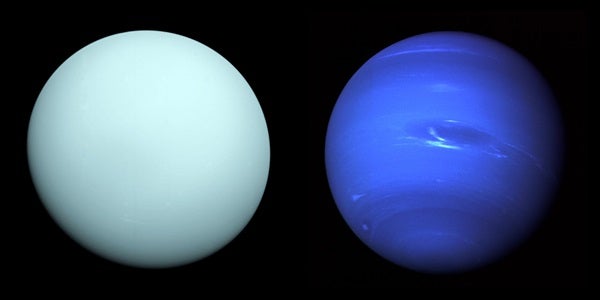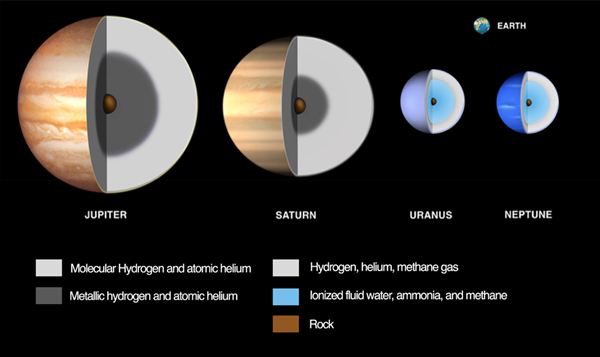For the first time, the extreme ice of Uranus and Neptune has been created in a laboratory. The high pressures and temperatures found within the hearts of the two ice giants have been a challenge to reproduced in the lab. However, by using lasers to create shock compression strong enough to vaporize diamonds, a team of scientists led by Marius Millot, a researcher at Lawrence Livermore National Laboratory in California, was able to reach the unprecedented conditions that allowed them to create the ice for the first time.
To create the unusual ice, Millot and his team started off by compressing ice to 25 thousand times the atmospheric pressure felt at Earth’s sea level. The resulting molecular ice was sixty times denser than regular water. The team contained the ice inside a diamond anvil cell, a high-pressure device made up of two opposing diamonds with the sample between them.
Aiming several very intense pulsed lasers at the cells, the researchers launched shockwaves through the sample that generated 100 times higher pressures and temperatures for a few billionths of a second.
“The experiment is so fast that we could not see the change if we were to peer inside the cell during the experiment,” Millot says. Instead, they used advanced ultrafast diagnostics to monitor the shockwaves and document how the ice changed.
According to Millot, the diagnostics showed that superionic water is partially opaque to visible light, making it look black.
The laser-driven compression was so violent that each run vaporized the diamonds at the end of each experiment. Millot said the process of preparing a new cell was “a long and complex procedure.”
“Our approach worked very well, but it took us quite some time to collect all the data needed to be absolutely sure and confirm the discovery,” he says.
The results were published February 5 in the journal Nature Physics.
When NASA’s Voyager 2 spacecraft arrive at Uranus and Neptune in the 1980s, it found that both of the ice giants boasted unusual magnetic fields. Unlike Jupiter, Saturn, and the terrestrial planets, the magnetic poles of the ice giants are offset from the axis they rotate around. Uranus’ magnetic field is offset by nearly a third of the radius of the planet, while Neptune’s is offset by half the radius.
Because planetary magnetic fields are produced by the movement of electrically conducting fluids at high pressures, the unusual magnetic fields are thought to be related to the fluids that generate them.
Superionic ice could be the answer. Although it has high ionic conductivity, it is only weakly electrically conductive, and therefore unlikely to contribute to a planet’s magnetic field, Milllot says. While Earth’s magnetic field is driven by the motion of its liquid outer core, the fields of Neptune and Uranus may instead be generated by the more normal water that exists in their thin outer layers, which lie much closer to the surface than their cores.
“This matches with the idea of a superionic ice interior,” he says.
The unusual ice may not be confined to the solar system. Millot says that it is possible that it could exist in water-rich exoplanets, as well.
“We would need more laboratory and astronomy data to confirm that,” he says. “And we are working on that!”












